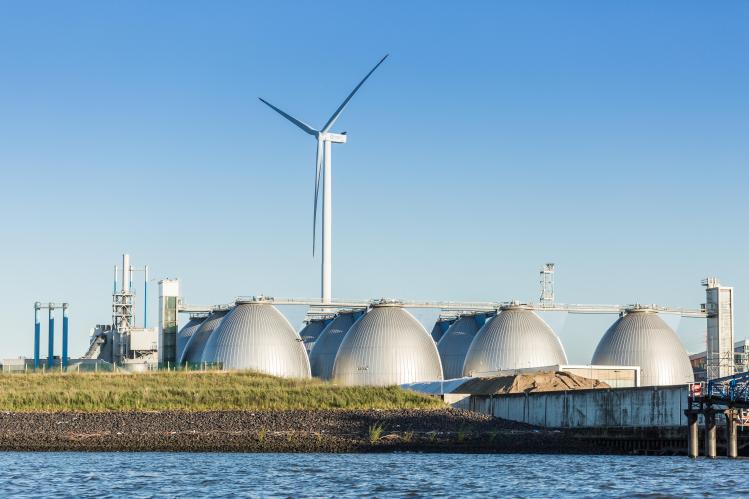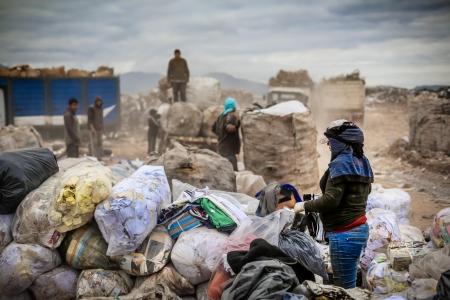1. EIB support for methane emissions reductions

The decade to 2030 is critical to addressing our planet's climate and environmental emergency. The “Global Methane Assessment” undertaken by the United Nations Environment Programme and the Climate and Clean Air Coalition found that human-caused methane emissions could be reduced by up to 45% this decade. Such reductions would avoid nearly 0.3°C of global warming by 2045 and would be consistent with keeping within reach the Paris Climate Agreement’s goal to limiting global temperature rises to 1.5˚C.
The European Investment Bank is transforming into a climate bank. It will drastically scale up and accelerate the green transition in Europe and across the globe.
In November 2019, we committed to a new set of ambitious targets for climate action and environmental sustainability. We are increasing our level of support for climate action and environmental sustainability to more than 50% of our overall lending by 2025 and beyond. This will help leverage €1 trillion of investment over the critical decade ahead. Our Climate Bank Roadmap 2021-2025 outlines these goals and maps the next stages of their implementation. We are also the first multilateral development bank to be Paris-aligned, since January 2021.
The EU bank has supported projects that reduce methane emissions for several decades. This support is only set to increase with our strengthened climate orientation and emerging technologies for methane emissions reductions. In 2013 the European Investment Bank became a partner of the Climate and Clean Air Coalition, a leader in addressing short-lived climate pollutants, including methane. In 2016, we carried out a stock-taking exercise to understand the impacts of our lending activities on emissions from short-lived climate pollutants and to identify options for scaling up mitigation efforts.
2. Bioeconomy sector
€5 billion in the period 2018-2020
In the bioeconomy sector, the European Investment Bank has contributed to reducing methane emissions through projects that:
(i) promote carbon removal in biomass and soils
(ii) improve water management in agriculture
(iii) manage agricultural crop and livestock residues better, including through biogas production from anaerobic digestion as a substitute for fossil fuels and fossil materials
(iv) reduce food losses along the production and supply chains and valorise food waste through enhanced circularity.
In the EIB Group Climate Bank Roadmap 2021-2025, we committed not to support projects that aim to produce or make use of agricultural or forestry products associated with the unsustainable expansion of agricultural activity into land that had the status of high carbon stock and high biodiversity areas (i.e. primary and secondary forest, peatlands, wetlands, and natural grasslands) on 1 January 2008 or thereafter. That’s because such activities are associated with the bulk of CO2 and non-CO2 greenhouse gas emissions (including methane) by agriculture and the food value chain globally.
Around 50% of our direct lending to the bioeconomy sector in the last three years qualified as climate action financing. A good proportion of this lending has targeted non-CO2 greenhouse gas emissions. With an enhanced focus on projects in subsectors such as forestry, biomaterials, renewable energy from biomass, circular economy and waste prevention, we can significantly increase our contribution to methane emissions reduction and the resilience of agricultural and forestry systems.
3. Solid waste management sector
€1.2 billion of direct lending in the period 2018-2020
In the solid waste management sector, we support projects that reduce methane emissions throughout the entire waste management cycle. In greenfield operations, this consists mainly of the appropriate treatment of biowaste in compost and anaerobic digestion plants, but also separate collection and separation of waste streams to reduce the biomass in residual waste, and thus emissions from final treatment and disposal (waste-to-energy plants, landfills). Brownfield operations typically include upgrades of existing collection and treatment facilities, but also landfill closures or rehabilitations, including the installation and upgrade of gas-capturing systems.
4. Wastewater sector
€2.4 billion of direct lending in the period 2018-2020
In the wastewater sector, we invest in wastewater treatment improvement, including projects for new, extended, rehabilitated and upgraded wastewater treatment systems. In many cases, these projects include anaerobic digestion that achieves significant methane capture and energy recovery through the use of biogas. In 2020 alone, we financed 17 projects that included wastewater treatment components. We estimate these projects will achieve a yearly reduction in methane emissions over 500 kt CO2 equivalent per year.
5. Bioeconomy project example

Methane emissions avoided through biomethane gas production units
The European Investment Bank is investing up to €50 million in the Eiffel Biogas Fund, an infrastructure fund. The fund intends to provide equity and quasi-equity to build a portfolio of more than 80 investments.
The fund will mainly finance mid-sized facilities in the European Union producing between 50 and 300 Nm³/h installed capacity per unit, whose primary feedstock consists of biomass from agricultural by-products (cattle manure, pig slurry lignocellulosic biomass, etc.). It contributes to climate change objectives by reducing direct greenhouse gas emissions from agricultural activity and by substituting the use of natural gas used as an energy source to businesses, households or transport.
Once fully invested, based on our carbon footprint methodology, the relative emissions of the project (the difference between absolute emissions and baseline) are expected to be 420 kt CO2 equivalent per year of emissions savings on a full lifecycle assessment approach. The estimated production of biomethane will be approximately 183 million m³ per year for its use to replace natural gas in the energy and chemicals systems. The methane is produced mainly from agricultural residues that would otherwise be the source of diffuse emissions to the atmosphere in their decay in uncontrolled conditions.
6. Solid waste project example

Methane emissions avoided through biomethane gas digesters
The European Investment Bank is providing a loan of €45 million to the Province of Jujuy in Argentina for the implementation of an integrated waste management system for the collection and valorisation of waste through reduction of waste quantities, recycling, and reuse, such as energy valorisation through energy recovery (production of biogas). The project will serve 800,000 people in the region. Project components include sorting stations, cells of sanitary landfills and compost areas, environment centres, transfer stations and the rehabilitation of existing dumpsites across the province. The biogas plant will have a nominal capacity of approx. 25,000 tonnes of waste annually.
The project will allow the phasing out of untreated waste dumping, the rationalising and improving of current solid waste disposal practices, promotion of recycling and reduction of risks related to public health and greenhouse gas emissions from dumpsites.
Once completed, based on our carbon footprint methodology, the relative emissions of the project (the difference between absolute emissions and baseline) are expected to be 20 kt CO2 equivalent per year of emissions savings.
7. Wastewater project example
Methane emissions avoided through anaerobic digestion of sewage sludge
The European Investment Bank will provide a loan of €160 million to Hamburg Stadtentwässerung, the German city’s wastewater utility. Investments mainly include the reconstruction and upgrading of sewer systems and the modernisation of the wastewater treatment plant with a capacity of 2.5 million people-equivalent. The state of the art wastewater treatment plant will also be the world’s first industrial-scale phosphorus recovery installation from sludge ash and will include a fourth treatment stage for the removal of micro-pollutants.
The sludge digesters will allow the digestion of sewage sludge to capture biomethane, which will, in turn, be used for the production of the plant’s energy needs, as well as making the plant a net exporter to the grid.
Once completed, based on our carbon footprint methodology, the relative emissions of the project (the difference between absolute emissions and baseline) are expected to be 54 kt CO2 equivalent per year of emissions savings.
